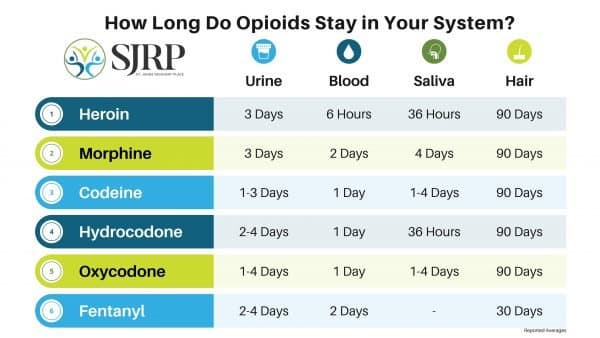Drug tests are an important tool in determining whether individuals are using illicit substances. But, can a drug test detect different types of opiates? This question is a crucial one, as opiates are highly addictive drugs with potentially serious consequences. In this article, we’ll explore the different types of opiate drug tests, how they work, and the accuracy of each type in detecting different opiates. We’ll also discuss the potential ramifications of a positive opiate drug test. By the end of this article, you will have a better understanding of the efficacy of drug tests in detecting opiates.

What are Opiates?
Opiate drugs are a class of drugs derived from the poppy plant. They are typically prescribed to relieve pain and are highly addictive. Common opiates include codeine, morphine, hydrocodone, and oxycodone. These drugs are commonly abused and can be detected in a drug test.
Types of Opiate Drugs
Opiate drugs can be classified into two broad categories: natural and synthetic. Natural opiates are derived from the poppy plant and include heroin, codeine, and morphine. Synthetic opiates are man-made and include drugs such as oxycodone, hydrocodone, and fentanyl.
Can a Drug Test Detect Different Types of Opiates?
Yes, a drug test can detect different types of opiates. Most drug tests are designed to detect the presence of opiate metabolites in the body. Metabolites are substances that are produced when the body breaks down a drug. Different types of opiates produce different metabolites, which can be detected in a drug test.
How Accurate Are Drug Tests for Detecting Opiates?
Drug tests are very accurate when it comes to detecting opiates. Most drug tests are designed to detect opiate metabolites at levels as low as 10 nanograms per milliliter (ng/mL). This means that even small traces of opiates can be detected in the body.
What Kind of Test is Used to Detect Opiates?
Most drug tests are urine tests, which are used to detect opiate metabolites in the body. Some tests may also use a blood or saliva sample in order to detect opiate metabolites.
What Does a Positive Test Result Mean?
A positive test result means that the test has detected the presence of opiate metabolites in the body. This does not necessarily mean that the person has taken opiates, as opiate metabolites can be present in the body for other reasons. For example, some cold and flu medications contain opiates, and can cause a false positive result.
What Happens If a Test is Positive?
If a drug test comes back positive for opiates, the person will usually be asked to provide a sample of their urine or blood for further testing. This is done to confirm the presence of opiates, and to determine the type and amount of opiates in the body.
What Are the Consequences of a Positive Test?
The consequences of a positive test result depend on the reason for the test. In some cases, a positive result can lead to criminal charges or a suspension from school. In other cases, a positive result may result in a referral to a treatment program.
Few Frequently Asked Questions
1.What are Opiates?
Opiates are a group of drugs that are derived from the poppy plant and are used to relieve pain. They can be either natural or synthetic and include drugs such as morphine, codeine, oxycodone, hydrocodone, and fentanyl. Opiates act on the brain and central nervous system to produce a powerful euphoria and are highly addictive.
2.Does a Drug Test Detect Different Types of Opiates?
Yes, a drug test can detect different types of opiates. Opiates can be detected in a urine test, which is the most common type of drug test used. A urine test can detect both natural and synthetic opiates, including morphine, codeine, oxycodone, hydrocodone, and fentanyl. Blood, saliva, and hair follicle tests can also be used to detect opiates.
3.How Long Do Opiates Stay in the Body?
The length of time that opiates stay in the body depends on the type of opiate and the frequency of use. Natural opiates, such as morphine and codeine, can stay in the body for up to 3 days after the last dose, while synthetic opiates, such as oxycodone, hydrocodone, and fentanyl, can stay in the body for up to 4 days after the last dose.
4.What Factors Affect How Long Opiates Stay in the Body?
Several factors can affect how long opiates stay in the body, including the type of opiate, the amount taken, the frequency of use, and the user’s age, weight, and metabolism. Opiates are metabolized by the liver, so liver function can also affect how quickly the drug is eliminated.
5.What is the Cutoff Level for a Positive Drug Test?
The cutoff level for a positive drug test is the level at which a laboratory deems a test result as positive. Generally, the cutoff levels for opiates on a urine test are set at 300 nanograms per milliliter (ng/mL). The cutoff level for saliva and blood tests may vary, depending on the laboratory.
6.Are There Any False Positive Drug Tests for Opiates?
Yes, there can be false positive drug tests for opiates. Certain medications, such as cold and flu medications, can contain ingredients that may interfere with the test and cause a false positive result. Additionally, certain foods, such as poppy seeds, can also interfere with the test and cause a false positive result.
In conclusion, drug tests can detect a variety of opiates, including heroin, morphine, codeine, oxycodone, and hydrocodone. While drug tests are not 100% accurate, they are still a reliable way to detect the presence of opiates in the body. Drug tests can help identify potential abuse or misuse of opiates, and can help medical professionals diagnose and treat addiction. Ultimately, drug tests are a valuable tool in the fight against the abuse of opiates.
